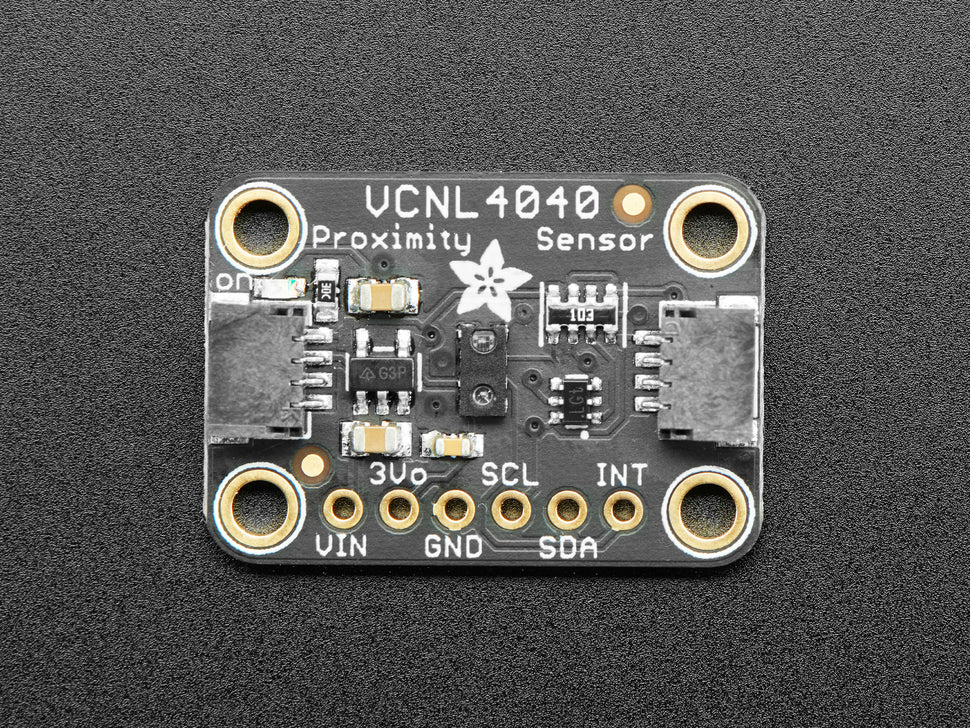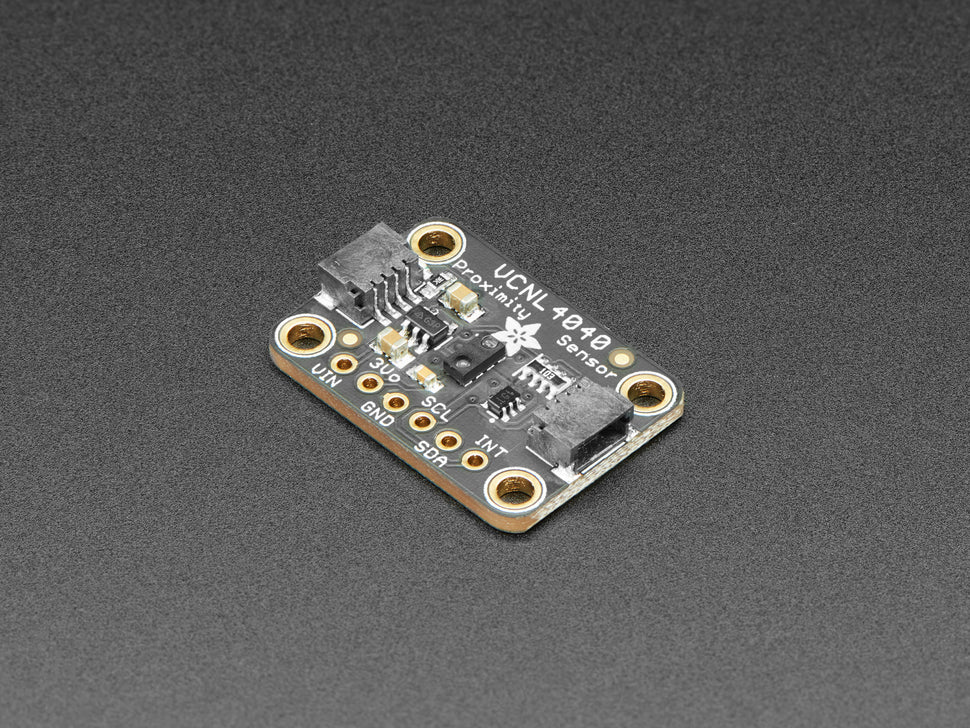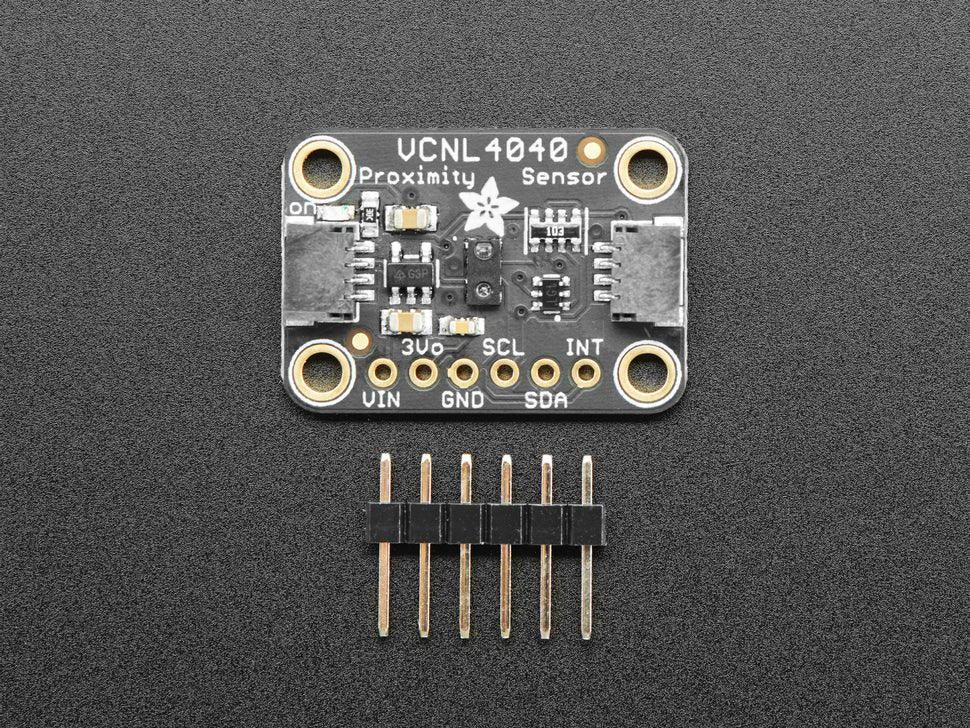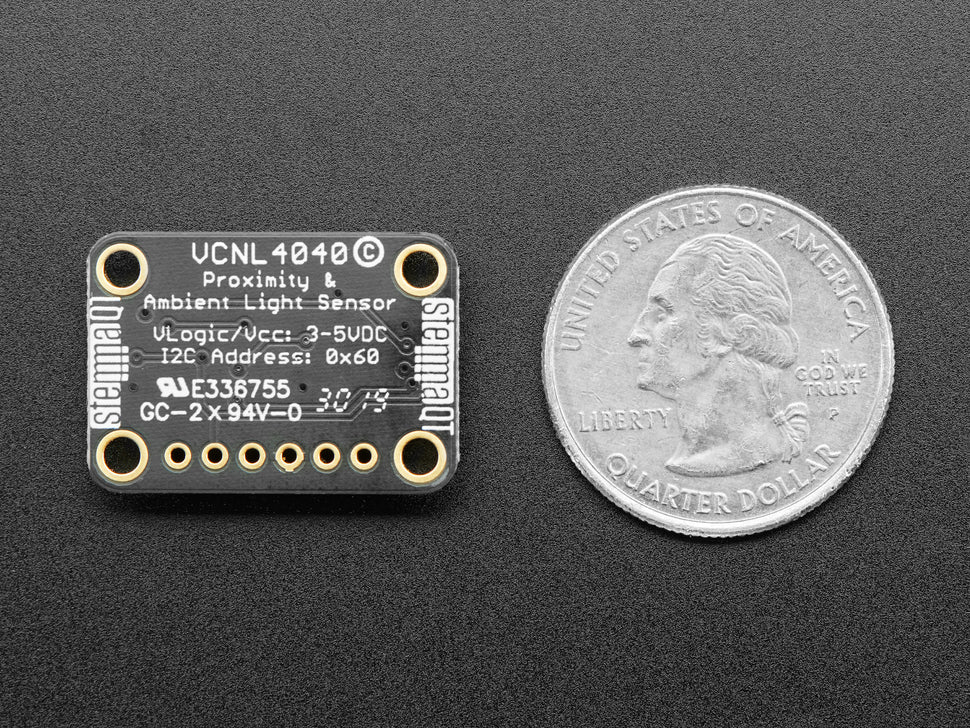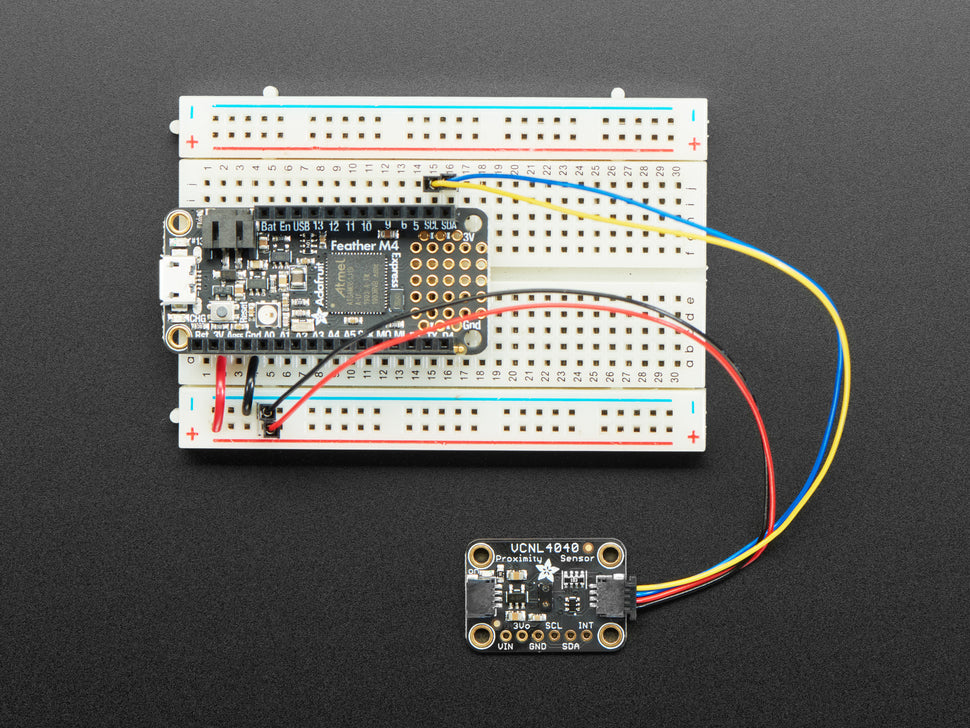Beschreibung
Der VCNL4040 ist ein praktischer Zwei-in-Eins-Sensor, mit einem Näherungssensor, der von 0 bis 200 mm (ca. 7,5 Zoll) funktioniert, und einem Lichtsensor mit einem Bereich von 0,0125 bis 6553 Lux.
Wir kennen das alle. Das Ding ist nah, aber wie nah? Wenn Sie eine kleine Entfernung mit angemessener Genauigkeit messen müssen, wie z.B. die ungefähre Höhe einer besonders ruhigen Hummel, kann der VCNL4040 Näherungssensor von Vishay das für Sie erledigen. Wenn Sie vielleicht gleichzeitig auch die Lichtmenge messen müssten, vielleicht um der Biene mitzuteilen, ob es Zeit zum Schlafengehen ist, haben Sie Glück! Das VCNL4040 kann auch das (Hummel nicht inbegriffen, wir haben versucht, sie in den Antistatikbeutel zu stecken, aber sie fing an, bedrohlich zu summen)
"OK, endlich kann ich mit meinem Projekt zur Bienenmessung und Lichtsensorik beginnen, aber wie benutze ich es?", fragen Sie. Um Ihnen das Leben leichter zu machen, damit Sie sich auf Ihre wichtige Arbeit konzentrieren können, haben wir den VCNL4040 auf eine Breakout-Platine zusammen mit Unterstützungsschaltungen gepackt, damit Sie dieses kleine Wunder mit 3,3V (Feather/Raspberry Pi) oder 5V (Arduino/ Metro328) Logikpegeln verwenden können. Da es außerdem I2C spricht, können Sie es einfach mit zwei Drähten (plus Strom und Masse!) anschließen. Wir haben sogar SparkFun qwiic-kompatible STEMMA QT-Stecker für den I2C-Bus beigelegt, so dass Sie nicht einmal löten müssen! Schließen Sie einfach Ihr Lieblingsmikro an und Sie können unsere CircuitPython/Python oder Arduino-Treiber verwenden, um einfach mit dem VCNL4040 zu kommunizieren und ungefähre Näherungswerte in kürzester Zeit zu ermitteln! QT-Kabel ist nicht enthalten, aber wir haben eine Vielzahl im Shop.
Um Ihnen die Möglichkeit zu geben, Ihre Messungen auf Ihre Situation abzustimmen, können Sie beim VCNL4040 die Integrationszeit (wie lange das Licht gemessen wird) einstellen, um die Empfindlichkeit Ihrer Messungen abhängig von den Lichtverhältnissen zu machen. Mit einer Integrationszeit von 80ms, da der Sensor nur für einen kurzen Zeitraum Messungen sammelt, repräsentiert jedes gemessene Lichtbit eine größere Lichtmenge. Aus diesem Grund beträgt der maximale Bereich in Lux bei der Integrationszeit von 80ms 6553,5 Lux.
Wenn Sie eine längere Integrationszeit verwenden und die gleiche Anzahl von Lichtmessungen "Ereignissen" erhalten, wissen Sie, dass vergleichsweise weniger Licht vorhanden ist, weil wir länger auf Licht warten und die gleiche Anzahl erhalten, was bedeutet, dass die Rate der Lichtereignisse geringer ist. Aus diesem Grund wird der VCNL4040 bei der maximalen Integrationszeit von 640ms nur bis zu 819,2 Lux messen.
Es ist auch zu beachten, dass mit der Erhöhung der Integrationszeit auch die Empfindlichkeit und Auflösung innerhalb des Messbereichs steigt
Zusätzlich zur Einstellung der Empfindlichkeit der Lichtmessungen können Sie den Strom und das Tastverhältnis der IR-LED, die die Näherungserkennung betreibt, ändern, um die Empfindlichkeit der Näherungsmessungen anzupassen.
Technische Details
- Diagramme, Bibliotheken, Code-Beispiele, Datenblätter und mehr sind im Lerntutorial enthalten
- Produkt-Abmessungen: 25.3mm x 17.8mm x 4.6mm / 1.0" x 0.7" x 0.2"
- Produktgewicht: 1.7g / 0.1oz
Description
The VCNL4040 is a convenient two-in-one sensor, with a proximity sensor that works from 0 to 200 mm (about 7.5 inches) and a light sensor with a range of 0.0125 to 6553 lux.
We've all been there. The thing is close, but how close? If you need to measure a small distance with reasonable accuracy, such as the approximate height of a particularly quiet bumblebee, Vishay's VCNL4040 proximity sensor can do it for you. If you might also need to measure the amount of light at the same time, perhaps to let the bee know if it's time to go to sleep, you're in luck! The VCNL4040 can do that too (bumblebee not included, we tried putting it in the anti-static bag, but it started buzzing menacingly)
"OK, finally I can get started on my bee measurement and light sensing project, but how do I use it?" you ask. To make your life easier so you can focus on your important work, we've packed the VCNL4040 onto a breakout board along with support circuits so you can use this little wonder with 3.3V (Feather/Raspberry Pi) or 5V (Arduino/ Metro328) logic levels. Also, since it speaks I2C, you can easily connect it with two wires (plus power and ground!). We even included SparkFun qwiic-compatible STEMMA QT connectors for the I2C bus, so you don't even have to solder! Just plug in your favorite mic and you can use our CircuitPython/Python or Arduino drivers to easily communicate with the VCNL4040 and get approximate approximations in no time! QT cable is not included, but we have a variety in the store.
To allow you to tailor your measurements to your situation, the VCNL4040 allows you to adjust the integration time (how long the light is measured) to make the sensitivity of your measurements dependent on the lighting conditions. With an integration time of 80ms, since the sensor only collects measurements for a short period of time, each bit of light measured represents a larger amount of light. For this reason, the maximum range in lux with the integration time of 80ms is 6553.5 lux.
If you use a longer integration time and get the same number of light measurement "events", you know that there is comparatively less light because we wait longer for light and get the same number, which means that the rate of light events is lower. For this reason, the VCNL4040 will only measure up to 819.2 lux at the maximum integration time of 640ms.
It should also be noted that as the integration time increases, so does the sensitivity and resolution within the measurement range
In addition to adjusting the sensitivity of the light measurements, you can change the current and duty cycle of the IR LED that powers the proximity detection to adjust the sensitivity of the proximity measurements.
Technical details
- Diagrams, libraries, code examples, datasheets and more are included in the learning tutorial
- Product dimensions: 25.3mm x 17.8mm x 4.6mm / 1.0" x 0.7" x 0.2"
- Product weight: 1.7g / 0.1oz
Sicherheitsangaben
- Lesen Sie die Bedienungsanleitung sorgfältig durch, bevor Sie das Produkt verwenden.
- Stellen Sie sicher, dass alle Montage- und Installationsanweisungen des Herstellers sorgfältig befolgt werden.
- Verwenden Sie das Produkt nur für den vorgesehenen Zweck.
- Die unsachgemäße Nutzung dieses Produkts kann zu schweren Verletzungen oder Sachschäden führen.
- Nicht für Kinder unter 10 Jahren geeignet.
- Bei unsachgemäßer Verwendung besteht eine Verletzungsgefahr.
- Dieses Produkt entspricht den geltenden Sicherheitsanforderungen der Europäischen Union.
- Dieses Produkt wurde gemäß der GPSR geprüft, die sicherstellt, dass alle relevanten Sicherheitsanforderungen für Konsumgüter eingehalten werden.
Nachverfolgbarkeitsinformationen
Jedes Produkt verfügt über eines oder mehrere der folgenden Merkmale:
- Ein CE-Kennzeichen, das die Einhaltung der Sicherheits-, Gesundheits- und Umweltschutzanforderungen der Europäischen Union anzeigt.
- Eine eindeutige Serien- oder Chargennummer, um die Nachverfolgbarkeit zu gewährleisten und bei Bedarf Rückrufaktionen zu unterstützen.
- Hersteller- und Importeurangaben für den Kundensupport und Sicherheitsanfragen.
Überwachung und Berichterstattung von Vorfällen
Für den unwahrscheinlichen Fall eines Produktproblems haben wir Verfahren implementiert, um:
- Kundenbeschwerden zeitnah bearbeiten.
- Schwerwiegende Vorfälle über das EU Safety Gate/RAPEX-System melden.
- Mit den Marktüberwachungsbehörden zusammenarbeiten, um die öffentliche Sicherheit zu gewährleisten.
Kontakt:
- Email: support [@] pi3g.com
- Telefon: 0341 / 392 858 40
Dieses Produkt ist vollständig mit allen geltenden EU-Vorschriften konform, um die Sicherheit unserer geschätzten Kunden zu gewährleisten.

